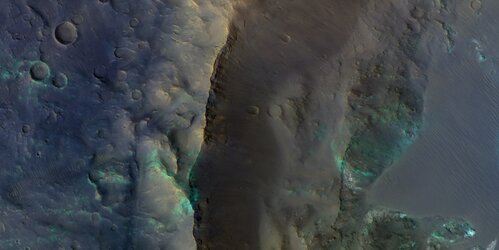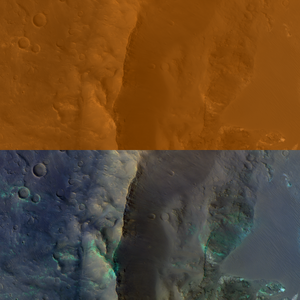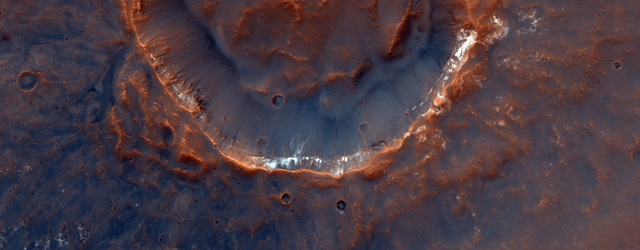Accept all cookies Accept only essential cookies See our Cookie Notice

About ESA
The European Space Agency (ESA) is Europe’s gateway to space. Its mission is to shape the development of Europe’s space capability and ensure that investment in space continues to deliver benefits to the citizens of Europe and the world.
Highlights
ESA - United space in Europe
This is ESA ESA facts Member States & Cooperating States Funding Director General Top management For Member State Delegations European vision European Space Policy ESA & EU Space Councils Responsibility & Sustainability Annual Report Calendar of meetings Corporate newsEstablishments & sites
ESA Headquarters ESA ESTEC ESA ESOC ESA ESRIN ESA EAC ESA ESAC Europe's Spaceport ESA ESEC ESA ECSAT Brussels Office Washington OfficeWorking with ESA
Business with ESA ESA Commercialisation Gateway Law at ESA Careers Cyber resilience at ESA IT at ESA Newsroom Partnerships Merchandising Licence Education Open Space Innovation Platform Integrity and Reporting Administrative Tribunal Health and SafetyMore about ESA
History ESA Historical Archives Exhibitions Publications Art & Culture ESA Merchandise Kids Diversity ESA Brand Centre ESA ChampionsLatest
Space in Member States
Find out more about space activities in our 23 Member States, and understand how ESA works together with their national agencies, institutions and organisations.
Science & Exploration
Exploring our Solar System and unlocking the secrets of the Universe
Go to topicAstronauts
Missions
Juice Euclid Webb Solar Orbiter BepiColombo Gaia ExoMars Cheops Exoplanet missions More missionsActivities
International Space Station Orion service module Gateway Concordia Caves & Pangaea BenefitsLatest
Space Safety
Protecting life and infrastructure on Earth and in orbit
Go to topicAsteroids
Asteroids and Planetary Defence Asteroid danger explained Flyeye telescope: asteroid detection Hera mission: asteroid deflection Near-Earth Object Coordination CentreSpace junk
About space debris Space debris by the numbers Space Environment Report In space refuelling, refurbishing and removingSafety from space
Clean Space ecodesign Zero Debris Technologies Space for Earth Supporting Sustainable DevelopmentLatest
Applications
Using space to benefit citizens and meet future challenges on Earth
Go to topicObserving the Earth
Observing the Earth Future EO Copernicus Meteorology Space for our climate Satellite missionsCommercialisation
ESA Commercialisation Gateway Open Space Innovation Platform Business Incubation ESA Space SolutionsLatest
Enabling & Support
Making space accessible and developing the technologies for the future
Go to topicBuilding missions
Space Engineering and Technology Test centre Laboratories Concurrent Design Facility Preparing for the future Shaping the Future Discovery and Preparation Advanced Concepts TeamSpace transportation
Space Transportation Ariane Vega Space Rider Future space transportation Boost! Europe's Spaceport Launches from Europe's Spaceport from 2012Latest
Metallic Mars landscape
Thank you for liking
You have already liked this page, you can only like it once!
This new image of the Mawrth Vallis region on Mars reveals a world rich in iron, magnesium and aluminium.
Cameras orbiting Mars can capture more colours than our eyes can see. The European Colour and Stereo Surface Imaging System (CaSSIS) onboard the ExoMars Trace Gas Orbiter (TGO) reveals a striking diversity of colour.
This CaSSIS image exposes yellow layers containing iron and magnesium-rich clays, overlain by white and blue layers rich in aluminium. Some heavily eroded layers appear dark.
The metallic colours of this vibrant landscape tell a story of mineralogical diversity that started around 3.6 billion years ago. The area is located south of the dichotomy boundary – a ridge that encircles Mars, marking where the southern highlands meet the northern lowlands. Mawrth Vallis continues to intrigue scientists with its geological complexity. Liquid water did once run through this area, which was shortlisted as one of the most promising landing sites for the ExoMars Rosalind Franklin rover Another region, Oxia Planum, was chosen as the spot where Rosalind Franklin will hunt for signs of life.
In the meantime, TGO keeps gathering information from orbit around Mars to understand its ancient past and potential habitability. TGO’s full science mission began in 2018. The spacecraft is not only returning spectacular images, but also providing the best inventory of the planet’s atmospheric gases and mapping the planet’s surface for water-rich locations. Understanding the history of water on Mars and if this once allowed life to flourish is at the heart of ESA’s ExoMars missions.
TGO captured this image on 11 February 2024m, centred at 18.8°W, 24.4°N.
-
CREDIT
ESA/TGO/CaSSIS -
LICENCE
ESA Standard Licence and Additional permission may be required
(contact spaceinimages@esa.int for further information)

Metallic Mars

Alga Crater rim

Alga Crater rim – comparing processing techniques

The eye of the crater















 Germany
Germany
 Austria
Austria
 Belgium
Belgium
 Denmark
Denmark
 Spain
Spain
 Estonia
Estonia
 Finland
Finland
 France
France
 Greece
Greece
 Hungary
Hungary
 Ireland
Ireland
 Italy
Italy
 Luxembourg
Luxembourg
 Norway
Norway
 The Netherlands
The Netherlands
 Poland
Poland
 Portugal
Portugal
 Czechia
Czechia
 Romania
Romania
 United Kingdom
United Kingdom
 Slovenia
Slovenia
 Sweden
Sweden
 Switzerland
Switzerland
























